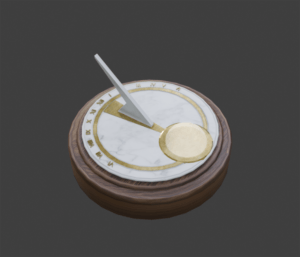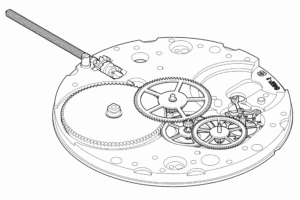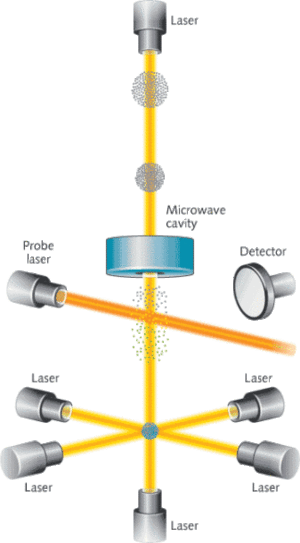From Fiction to Science
CHIMES
Post Mortem for the Mixed Reality Project
From Fiction to Science
Post Mortem for the Mixed Reality Project
The project started with the core idea of multidimensional world. In the beginning, the team focused on conceptualized and created an interactive ludic experience with space-time. However, as space-time continuum itself is a hard topic to conceptualized, specially in a 3-5 minutes length. The whole team decide to move into a new topic. A game about time, but not the time itself. Rather the concept is based on the mechanical tool that tells time – Clocks & Watches.
Although, after the 6th week it seems that the title doesn’t go with the theme that we have decided later. So we changed the title from “Tesseract” to “Chimes”. As “Chimes” indicates those beautiful tones in watches which is used to tell a specific time.
After the week 6, the team was still confused about the puzzle. I, with the help of Manuel, tried to come up with puzzles ideas. But it seems frustrating to have a puzzle within 3 minutes.
The important thing is the space and time. The space for the holodeck is 100 square meters, although the audience will get only 3 minutes to experience it. It is difficult to get any goal in that time within this big space. The bigger risk is that it may become a frustrative game for the difficulty settings. A puzzle requires cognitive recognition, brainstorming and finding the rules. Which seems pretty difficult to achieve in 3 minutes. On the other hands, if there are too much hints and clues, beside feeding the audience with information – it would not be puzzle anymore, rather it becomes rigid in gameplay.
So we decided to create an interactive experience than implying any game mechanics. We want to make the audience feel about time freely. To keep that in mind, we decided to create it more in experienced based than play. Besides, it will also need time to make the player teach any rules.
After deciding about the theme, a setting and layout is needed for the room design. It was still vague. But to come up with a basic idea, we set the room as an artisans workshop who is interested in collecting timepieces through the decades as well as building them. We decide to decorate the room chronologically. As an example, near to the entrance of the room, the old and antique timepieces will be kept. Whereas, the other corner will be decorated by a workshop table. Finally, in the opposite of the entrance will be the most modern type of timepiece known as atomic clock will be kept. It is designed in an U-shape chronology. Although, the audience have the freedom to explore any timepiece any time he wants to.
It should be mentioned that the idea of making it as an artisans place not only to setup a setting, but also increase curiosity. The room might feel very personal, yet it can make the audience to search for timepieces that they can explore.
To create experience we thought about few ideas. As it is about the study and measurement of time (Horology), we wanted the audience go through the timeline of horology besides let them experience the mechanism. To do that, we will use both real and augmented objects. The interaction will be setup as the devices available there to interact with.
As an example, which we use for prototype, The sundial will be placed in the room mostly near to the entrance. Where the player can see a sundial in real world. Using augmentation, they can see the position of the sun and manipulate it’s distance or speed to observe how time can be measured in sundial as well as how seasons change based on the distance from the sun. And also an augmented world can be shown in a globe near the bottom of the sundial.

Another example of the interaction, is from the mechanical clocks. An audience can pick a mechanical clock from the watchmakers desk. Then it can be scanned to see the augmented clock parts. They can dismantle them and use some of the other parts in augmentation to see how the mechanism changes.

Also, the atomic clock can be intractable by using real laser around a glass cylinder. Where the audience can change the orientation of lasers to charge up atoms in augmentation to make the clock more precise.

Nonetheless, there will be some more painting and blueprints which may give information and ideas about the important achievement in horology in both real and augmented way.
In addition, the augmented information and real timepieces can be connected through network so that giving an input in augmented world can change the real objects so that the audience can feel it more like real than made up world.
Although, all the clock doesn’t have sound, we will incorporate sound as feedback to the interaction. It should be spatial so that when the audience move they can hear different types of ticking sound or chimes based on their nearest interactive timepieces. Sometimes, different music with different bitrate can be use to give a perception of changing time.
There are few possibilities with the project.
Firstly, it can be an opportunity to collaborate with watchmakers and organizations. It can highly improve the mechanism to the idea. Besides, the museum can be benefited by the experts opinion. And creating a beautiful experience.
Secondly, History of horology is very interesting and important. Specially, Europe holds the importance of watchmaking throughout the centuries. Even Germany has its own glorious history about timepieces. It is an great opportunity to represent those history through this experience.
Thirdly, it is also possible to make the audience understand the importance of measuring time through this experience. Which may help young minds to grow interest about timepieces.

